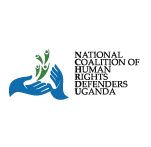Protection FAQs
A1: The Protection Committee plays a central role in the comprehensive protection framework established by NCHRD-U. It ensures that the Protection Manual’s guidelines are rigorously followed to safeguard the safety and security of Human Rights Defenders (HRDs). This committee takes a proactive approach to enable HRDs to continue their crucial work with confidence, knowing they have a dedicated team working tirelessly to protect their rights and well-being.
A2: Members of the Protection Committee are appointed by the Executive Director, include the Executive Director, Protection Officers, Protection Manager, Assistant Protection Officer, Capacity Building Officer, and Advocacy and Networking Officer. The Executive Director decides on committee appointments.
A3: The Protection Committee is responsible for screening HRDs’ cases at risk, reviewing the protection fund budget, and advising on support decisions. Additionally, it serves as a source of information regarding best practices in managing the protection fund and HRD protection. The committee offers oversight in managing the emergency and protection department, holds meetings to support HRDs at risk, and makes the final decision to support or decline requests.
A4: The Protection Committee generally meets at least once a week, or more frequently as needed. Meetings are organized and prepared by the Protection and Emergency Officers. Formal meeting minutes are recorded, circulated to committee members, and approved by the chairperson, who is appointed by the Executive Director.
Protection Manual for the National Coalition of Human Rights Defenders (NCHRD-U)
A5: Confidentiality is a top priority and guiding principle. All information and documents gathered during committee involvement are considered confidential. Committee members sign a confidentiality agreement, acknowledging NCHRD-U as the rightful owner of all confidential information. Breaches of confidentiality result in actions determined by the Executive Director.
A6: The working language is English for both written and oral communication. However, depending on the case, communication to the HRD may require translation into their local language, and this is usually done with the assistance of the focal person.
A7: HRD protection requests are evaluated following established case management and referral network processes. These protocols provide a structured and efficient approach to assessing the protection needs of HRDs.
A8: Committee meetings are convened to review protection cases and assess progress on ongoing cases. They also serve as a platform to discuss HRD protection matters, convene urgent meetings with donors or government agency heads as needed, and update the Board of Directors on protection matters.
A9: Quarterly meetings are held with the Technical Thematic Working Groups (TTWG) to discuss HRD protection matters, providing a forum for collaboration and strategic planning.
A10: While physical attendance at meetings is preferred, committee members who are absent, such as
those in the field or on leave, may participate virtually when physical attendance is not feasible.
Protection Manual for the National Coalition of Human Rights Defenders (NCHRD-U)
A11: HRDs often face significant risks and threats due to their advocacy and human rights work. They may challenge authorities, advocate for marginalized communities, or expose human rights abuses, making them vulnerable to harassment, violence, and legal persecution. Protection mechanisms are essential to ensure HRDs can continue their vital work safely. Failure to provide protection support may lead to abandoning the cause and discourage other would-be defenders from joining the movement due to the risks.
A12: NCHRD-U’s protection support typically covers a period of 90 days. It is usually demand-driven by the HRD, who bets knows what kind of support they need. The case is closed as soon as the HRD at risk receives the requested support to allow them to settle in their new environment. After this initial period, the case may be re-evaluated, and if HRD still requires further support, they can be referred to an appropriate Human Rights Organization for ongoing assistance.
A13: It is possible for local or international partner entities to contribute to the support of a specific HRD as long as the case meets the protection criteria, is legally sound, and is urgently needed. However, it is generally advisable for such assistance to be coordinated through the Protection Committee to ensure a systematic and organized approach to HRD protection.
A14: Gender considerations in HRD protection encompass understanding and addressing the unique needs of each gender and the degree of vulnerability. Women HRDs and minority groups, such as key populations, individuals working on SOGI, PWDs, and the youth, often require more attention due to historical discrimination and the specific risks they face. Specialized approaches and support mechanisms may be necessary to ensure comprehensive protection.
A15: HRD protection cases can be channeled to NCHRD-U through various means, including walk-ins at an
HRD office, a dedicated helpline and toll-free, email requests, phone calls, media, social media, referrals
Protection Manual for the National Coalition of Human Rights Defenders (NCHRD-U)
from other organizations, or recommendations from individuals familiar with the HRD’s situation. These channels ensure that HRDs can seek assistance and report threats or incidents through accessible and confidential avenues.
A16: An HRD protection request may be disqualified under various circumstances, including if the request is made under false pretenses, if the HRD is engaged in work unrelated to human rights defense, and if they have a political affiliation that clearly portrays them as political actors belonging to any different political affiliation. This is also guided by the NCHRD-U Code of Conduct 2024.

